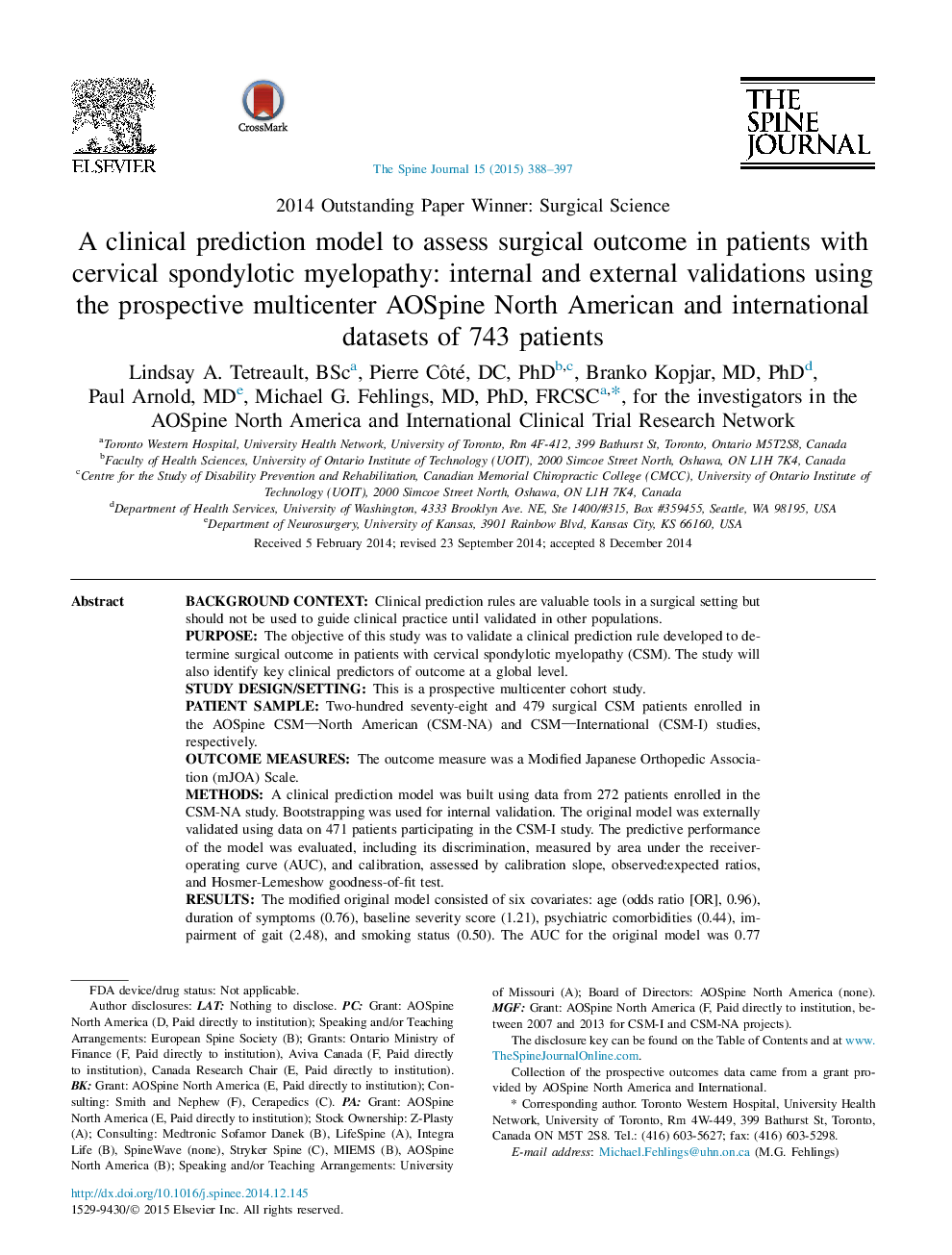| کد مقاله | کد نشریه | سال انتشار | مقاله انگلیسی | نسخه تمام متن |
|---|---|---|---|---|
| 4096704 | 1268569 | 2015 | 10 صفحه PDF | دانلود رایگان |

Background contextClinical prediction rules are valuable tools in a surgical setting but should not be used to guide clinical practice until validated in other populations.PurposeThe objective of this study was to validate a clinical prediction rule developed to determine surgical outcome in patients with cervical spondylotic myelopathy (CSM). The study will also identify key clinical predictors of outcome at a global level.Study design/settingThis is a prospective multicenter cohort study.Patient sampleTwo-hundred seventy-eight and 479 surgical CSM patients enrolled in the AOSpine CSM—North American (CSM-NA) and CSM—International (CSM-I) studies, respectively.Outcome measuresThe outcome measure was a Modified Japanese Orthopedic Association (mJOA) Scale.MethodsA clinical prediction model was built using data from 272 patients enrolled in the CSM-NA study. Bootstrapping was used for internal validation. The original model was externally validated using data on 471 patients participating in the CSM-I study. The predictive performance of the model was evaluated, including its discrimination, measured by area under the receiver-operating curve (AUC), and calibration, assessed by calibration slope, observed:expected ratios, and Hosmer-Lemeshow goodness-of-fit test.ResultsThe modified original model consisted of six covariates: age (odds ratio [OR], 0.96), duration of symptoms (0.76), baseline severity score (1.21), psychiatric comorbidities (0.44), impairment of gait (2.48), and smoking status (0.50). The AUC for the original model was 0.77 (95% confidence interval [CI]: 0.71, 0.82) and across the bootstrap replicates was 0.77 (95% CI: 0.76, 0.77), reflecting good discrimination and internal validity. The model tested on the CSM-I dataset yielded an AUC of 0.74 (95% CI: 0.69, 0.79), a calibration slope of 0.75, and an insignificant Hosmer-Lemeshow test. The ORs generated for baseline mJOA (OR, 1.26), impairment of gait (2.67), age (0.97), and smoking (0.55) were very similar to the original values of 1.28, 2.39, and 0.97, respectively. Duration of symptoms (OR, 0.94) had a significantly different odds ratio than in the original model, but the direction of its relationship with outcome was the same. Psychiatric comorbidities was not a significant predictor at an international level, likely because of underreporting: only six patients outside of North American centers were diagnosed with depression or bipolar.ConclusionsThe parameter estimates generated from the original analysis were internally valid. The original model was also externally valid. The most significant global predictors of surgical outcome were baseline myelopathy severity, age, smoking status and impaired gait.
Journal: The Spine Journal - Volume 15, Issue 3, 1 March 2015, Pages 388–397